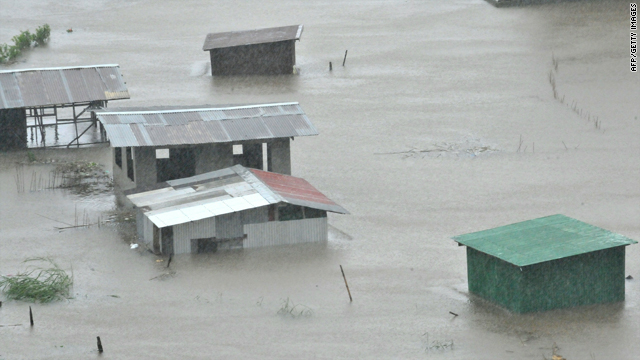 Houses in Baguio City, Philippines, lie submerged by flooding Tuesday due to heavy rains brought by Typhoon Megi. STORY HIGHLIGHTS
Houses in Baguio City, Philippines, lie submerged by flooding Tuesday due to heavy rains brought by Typhoon Megi. STORY HIGHLIGHTS- Drownings, falling trees, lightning kill people
- The typhoon is over the South China Sea, could approach Hong Kong
(CNN) -- The death toll in the Philippines from Typhoon Megi has climbed to 11, as the powerful storm moved away from the country.
According to civil defense officials, four people died in Pangasinan province: Three were killed by a falling tree, and the fourth by lightning.
Three more died in a storm surge in Isabela province, and one person drowned while trying to cross a river in Nueva Ecija province.
Additionally, the National Disaster Risk Reduction & Management Council reported that one person drowned in the town of Cagayan, one was killed by a falling tree in Kalinga province, and one was killed by another tree in the city of Baguio.
Share iReports on Typhoon Megi
 Video: Super Typhoon Megi hits Philippines RELATED TOPICS
Video: Super Typhoon Megi hits Philippines RELATED TOPICS - Philippines
On Tuesday, Megi carried sustained winds of about 167 kph (104 mph) off the coast of the Philippines, according to CNN meteorologist Jennifer Delgado. The typhoon was over the South China Sea and could approach Hong Kong and mainland China in the coming days.
Megi has earned the distinction as the strongest storm on the planet since Hurricane Wilma in 2005, CNN meteorologist Ivan Cabrera said. At one point, the typhoon carried sustained winds of about 269 kph (167 mph) before making landfall.
Journalist Eduardo Lingao in Manila contributed to this report.